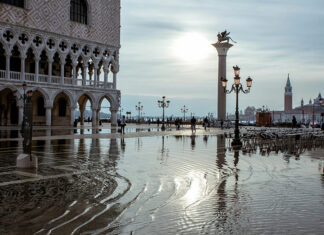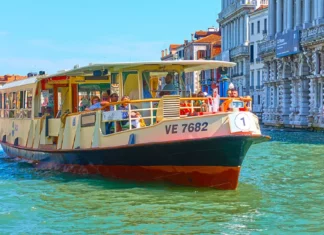The Lido (meaning beach in Italian) is a separate island from Venice. Measuring less than 200 metres in depth in certain areas, it is a 12km stretch of sand, strategically positioned between the Lagoon and the open sea, only connected to the city and dry land by the vaporetti (ferry boats). The clear difference between the Lido and Venice is that the Lido has real streets, which means you can get around by car. In mid-November, Rolls Royce’s, Cadillac’s and Bentleys can bee seen at the entrances of grand hotels. Today, it’s considered fancier to access the Lido by boat or explore it on foot or by bicycle.
The nature reserve and wild sand dunes of the Alberoni, recognized and protected by the WWF since 1997, are the perfect place for a quick swim. The area comprises 160 hectares of land, including two kilometres of golden sand dunes that extend from Murazzi and the Alberoni dam to a beautiful pine forest. For a natural beach experience, the Lido also offers several free beaches, like the sandy dunes of San Nicolò, the rocky outcrops of the Murazzi, or the beach known to the Venetians as ‘Bluemoon”.
Among other attractions, the area is home to an exclusive golf club set against a stunning backdrop of umbrella pines and poplars. Founder of the famous automotive house and an avid fan of Venice, Henry Ford commissioned the course in 1926, when he discovered to his disappointment that there was nowhere else where he could play golf, a sport widely practised in America but not in Italy at that time.
Moving to the other end of the island, you can find Malamocco, a small, ancient town that offers visitors a mini experience of Venice with its canals, ‘campielli’ and ancient buildings. Also dating back to old times, is located the settlement of San Nicolò del Lido, featuring a Benedictine complex built in the 11th century.




